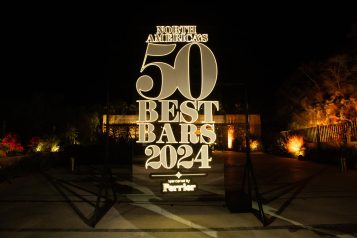When winetasting in the Napa Valley, consider employing the same tactic utilized by Disneyland aficionados: head to the back of the park first and work your way forward. As Disney neophytes ooh and ahh over the sights on Main Street, insiders make for “It’s a Small World” for a brief interlude of relative calm. The same phenomenon applies to Napa; drive past the well-known wineries along Highway 29 and head to Clos Pegase at the northern end of the Valley to start your day of winetasting. You’ll break free from the carloads stopping for selfies at the ‘Welcome to Napa Valley’ roadside sign, and you’ll have room to breathe.
There are, of course, reasons other than reverse Valley crowd flow to head to Clos Pegase—named for Pegasus, the winged horse of Greek mythology who unleashed the sacred Spring of the Muses, bringing life to the vines and inspiration to the poets. Their lovely wine selection is motivation enough to plan a visit. Clos Pegase wines are made exclusively from their own estate vineyards in Calistoga (primer for Cabernet) and Carneros (Chardonnay, Pinot Noir, and Merlot) allowing for complete control over grape growing and winemaking. Here are a few other reasons to put Clos Pegase on your winetasting radar.
- Architecture: Clos Pegase’s Michael Graves-designed winery is a Napa Valley landmark and an internationally acclaimed work of postmodern architecture. The result of an architectural design competition held in 1984 in association with the San Francisco Museum of Modern Art, the building has been described as “a place of pilgrimage” and “America’s first monument to wine.” After selecting the winery’s scenic site, then owner Jan Shrem held the competition in which 96 design teams competed. His specifications: delight, illuminate, and surprise. The winner: architect Michael Graves with a majestic and tranquil design that merged modern and traditional architecture with ancient Mediterranean culture. Graves described the character of his creation as tending “to evoke memories of a European ancestry” and having a “timeless sensibility.” The grand entrance portico supported by two massive pillars provides the entry point to the winery where 20,000 square feet of caves are dug into the volcanic knoll.
- Caves: The southern side of the caves house wine barrels in a temperature and humidity controlled environment perfectly designed for aging wine until bottle-ready. The northern side includes the unique cave theater, a dramatic space designed expressly for the enjoyment of their wines, and lined with candle light and Bacchus themed antiquities. It’s the perfect setting for celebrations and special events. In fact, the best way to enjoy the Clos Pegase collection is with their Connoisseur Cave Tour and Tasting (by appointment only, 11am, 1pm and 3pm daily.) Guests are welcomed in the tasting room with a splash of wine, then guided through the winery’s history, and the production area, where tastings are granted direct from the barrel. The connoisseur tasting culminates in the spectacular cave theatre with a seated curator-led tasting of current and library wines paired with hand-selected artisanal cheese and charcuterie.
- Grounds: In addition to its Michael Graves-designed grounds that seamlessly integrate the buildings and landscape, Clos Pegase recently installed a new Heritage Garden—an expansive landscape by Flora Grubb of San Francisco. It features a special collection of rare, drought-resistant plants and trees, including 19 wine palms. The architecture and grounds are a perfect melding of indoors and outdoors—a key to the Napa Valley lifestyle. The courtyard is another important location at Clos Pegase; lined with cypress trees, and with the formal structure of a European garden, the space is magically inviting—especially at night when illuminated with strings of lights.




























